Resident Crews of the International Space Station (ISS)
![]()
ISS: Expedition 70 |
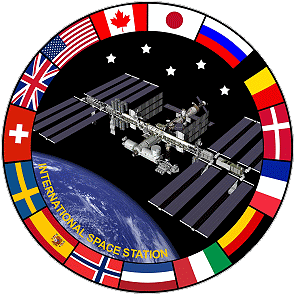 |
 |
 |
crew poster |
|
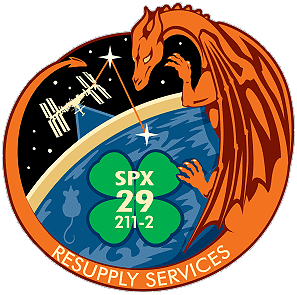 |
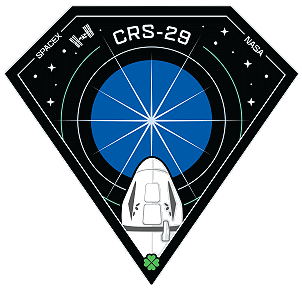 |
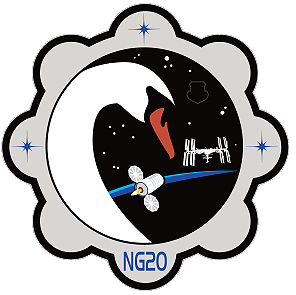 |
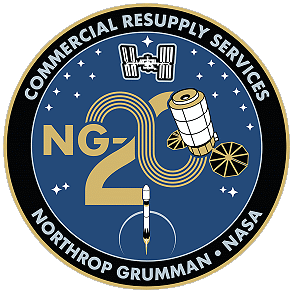 |
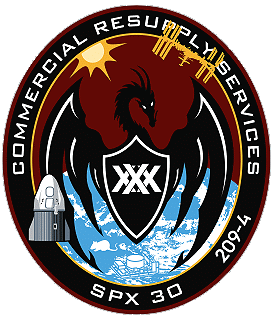 |
 |
![]()
Crew, launch- and landing data
| No. | Nation | Surname | Given names | Position | Spacecraft (launch) |
Launch date |
Launch time |
Spacecraft (landing) |
Landing date |
Landing time |
Mission duration |
Orbits |
| 1 | Mogensen | Andreas Enevold | ISS-CDR | SpaceX Crew-7 | 26.08.2023 | 07:27:27 UTC | SpaceX Crew-7 | 12.03.2024 | 09:47:38 UTC | 199d 02h 20m 11s | 3184 | |
| 2 | Moghbeli | Jasmin | Flight Engineer-4 | SpaceX Crew-7 | 26.08.2023 | 07:27:27 UTC | SpaceX Crew-7 | 12.03.2024 | 09:47:38 UTC | 199d 02h 20m 11s | 3184 | |
| 3 | Furukawa | Satoshi | Flight Engineer-5 | SpaceX Crew-7 | 26.08.2023 | 07:27:27 UTC | SpaceX Crew-7 | 12.03.2024 | 09:47:38 UTC | 199d 02h 20m 11s | 3184 | |
| 4 | Borisov | Konstantin Sergeyevich | Flight Engineer-6 | SpaceX Crew-7 | 26.08.2023 | 07:27:27 UTC | SpaceX Crew-7 | 12.03.2024 | 09:47:38 UTC | 199d 02h 20m 11s | 3184 | |
| 5 | Kononenko | Oleg Dmitriyevich | ISS-CDR * | Soyuz MS-24 | 15.09.2023 | 15:44:35.417 UTC | Soyuz MS-25 | 23.09.2024 | 11:59:03,8 UTC | 373d 20h 14m 28s | 5984 | |
| 6 | Chub | Nikolai Aleksandrovich | Flight Engineer-2 | Soyuz MS-24 | 15.09.2023 | 15:44:35.417 UTC | Soyuz MS-25 | 23.09.2024 | 11:59:03,8 UTC | 373d 20h 14m 28s | 5984 | |
| 7 | O'Hara | Loral Ashley | Flight Engineer-3 | Soyuz MS-24 | 15.09.2023 | 15:44:35.417 UTC | Soyuz MS-24 | 06.04.2024 | 07:17:47.3 UTC | 203d 15h 33m 12s | 3264 | |
| 8 | Dominick | Matthew Stuart | Flight Engineer | SpaceX Crew-8 | 04.03.2024 | 03:53:38 UTC | SpaceX Crew-8 | 25.10.2024 | 07:29:02 UTC | 235d 03h 35m 24s | 3760 | |
| 9 | Barratt | Michael Reed | Flight Engineer | SpaceX Crew-8 | 04.03.2024 | 03:53:38 UTC | SpaceX Crew-8 | 25.10.2024 | 07:29:02 UTC | 235d 03h 35m 24s | 3760 | |
| 10 | Epps | Jeanette Jo | Flight Engineer | SpaceX Crew-8 | 04.03.2024 | 03:53:38 UTC | SpaceX Crew-8 | 25.10.2024 | 07:29:02 UTC | 235d 03h 35m 24s | 3760 | |
| 11 | Grebyonkin | Aleksandr Sergeyevich | Flight Engineer | SpaceX Crew-8 | 04.03.2024 | 03:53:38 UTC | SpaceX Crew-8 | 25.10.2024 | 07:29:02 UTC | 235d 03h 35m 24s | 3760 | |
| 12 | Dyson | Tracy Caldwell | Flight Engineer | Soyuz MS-25 | 23.03.2024 | 12:36:10.573 UTC | Soyuz MS-25 | 23.09.2024 | 11:59:03,8 UTC | 183d 23h 22m 53s | 2944 |
* since March 11. 2024 Oleg Kononenko replaced Andreas Mogensen as ISS-CDR
 |
Expedition Report
|
ISS Expedition 70 began with the undocking of Russian
spacecraft Soyuz
MS-23 on September 27, 2023 at 07:54:21
UTC. The landing crew consisted of Sergei Prokopyev, Dmitri Petelin and Frank Rubio. Three-and-a-half-hours later the crew landed safely in Kazakhstan. So, the new Expedition 70 consisted of ISS Commander Andreas Mogensen, Jasmin Moghbeli, Satoshi Furukawa, Konstantin Borisov, Oleg Kononenko, Nikolai Chub and Loral O'Hara. The first Russian spacewalk in Expedition 70 was performed by Oleg Kononenko and Nikolai Chub on October 25, 2023 (7h 41m). In addition to the previously planned tasks, including installing a radar on the Nauka module to observe the Earth's surface and launching the student nanosatellite Parus-MGTU to test the technology for deploying a solar sail. In addition the cosmonauts had to conduct inspections and photograph leak sites at an additional radiant heat exchanger in the Nauka module so that specialists on Earth can find out the reasons for the occurrence of the occurrence. The two cosmonauts opened and closed various valves to redirect the coolant flow. However, coolant continued to leak. Before returning to the airlock, they cleaned their spacesuits with rags and cloths. On November 01, 2023 Jasmin Moghbeli and Loral O'Hara performed the second spacewalk (6h 42m). They replaced one of twelve Trundle Bearing Assemblies on the port truss Solar Alpha Rotary Joint (SARJ). The bearings enable the station's solar arrays to rotate properly to track the sun as the station orbits the Earth. SpaceX's 29th Commercial Resupply Services mission launched on November 10, 2023 at 01:28:14 UTC on a Falcon 9 rocket from Launch Complex 39A at NASA's Kennedy Space Center in Florida. Dragon SpX-29 or CRS-29 carried more than 6,500 pounds (2,948 kg) research, logistics and hardware for the Expeditions 70 and 71. SpaceX's Dragon spacecraft will deliver new science investigations, food, supplies, and equipment to the international crew, including NASA's AWE (Atmospheric Waves Experiment), which studies atmospheric gravity waves to understand the flow of energy through Earth's upper atmosphere and space. The spacecraft also delivered NASA's ILLUMA-T (Integrated Laser Communications Relay Demonstration Low-Earth-Orbit User Modem and Amplifier Terminal), which aims to test high data rate laser communications from the space station to Earth via the agency's LCRD (Laser Communications Relay Demonstration). Together, ILLUMA-T and LCRD will complete NASA's first two-way, end-to-end laser communications relay system. Arrival at the station was on November 11, 2023 at 10:07 UTC. The SpaceX Dragon spacecraft docked autonomously to the station's zenith port of the Harmony module. The spacecraft is expected to spend about a month attached to the orbiting outpost before it returns to Earth with research and return cargo, splashing down off the coast of Florida. Progress MS-23 filled with 'junk' and used-up equipment undocked from the International Space Station on November 29, 2023 at 07:55:25 UTC. The unmanned transporter re-entered the atmosphere a few hours later and burned up over the South Pacific. The unpiloted spacecraft Progress MS-25 launched at 09:25:11.703 UTC on December 01, 2023 on a Soyuz rocket from the Baikonur Cosmodrome in Kazakhstan. Roscosmos Progress MS-25 cargo spacecraft carrying about three tons of food, fuel, and supplies for the Expedition 70 crew aboard the International Space Station. The Progress spacecraft was be placed into a two-day, 34-orbit journey to the station, leading to an automatic docking to the Poisk module at 11:18:30 UTC on December 03, 2023. Progress MS-25 delivered 2,528 kg of cargo to the ISS, including 515 kg of fuel for refueling the station, 420 kg of drinking water and 40 kg of nitrogen, as well as 1,553 kg of resource equipment, packaging for scientific experiments and food products, medical and sanitary-hygienic means for ensuring work and the Life of the crew of the 70th long-term expedition. For the "Quail" experiment, a special complex "Incubator-3" and 48 Japanese quail eggs were sent to the ship. The embryonic development of chicks will be examined in the incubator that the astronauts will set up in the Nauka multi-purpose laboratory module: half of the eggs will be kept in weightlessness, the other half in a centrifuge that simulates gravity. At certain stages of embryonic development (after three, seven, ten and 14 days), a portion of the eggs are removed from the incubator, fixed in a formaldehyde solution in a special sealed device, and then returned to Earth so that scientists can study "frozen" embryos at different stages of development. Also arriving on the Progress MS-25 is equipment for the Kvarts-M experiment, which the cosmonauts will need to install on the Poisk module during a future spacewalk to study and control space corrosion. The spacecraft will remain at the orbiting laboratory for approximately six months, then undock for a destructive but safe re-entry into Earth's atmosphere to dispose of trash loaded by the crew. On December 21, 2023 at 22:05 UTC the unmanned freighter Dragon SpX-29 or CRS-29 undocked from the International Space Station and splashed down a day later. Dragon carried back to Earth more than 4,300 pounds (1,900 kilgrams) of supplies and scientific experiments designed to take advantage of the space station's microgravity environment. Splashing down off the coast of Florida enables quick transportation of the experiments to NASA's Space Station Processing Facility at Kennedy Space Center in Florida, allowing researchers to collect data with minimal sample exposure to Earth's gravity. Scientific hardware and samples returning to Earth include Planet Habitat-03, which assesses whether genetic adaptations in one generation of plants grown in space can transfer to the next generation. This is one of the first multi-generation plant biology studies in orbit. Other studies include JAXA's (Japan Aerospace Exploration Agency) Cell Gravisensing, an investigation that looks at how cells sense and respond to the effects of gravity. Results could promote drug development for treating muscle atrophy and osteoporosis. Also returning on Dragon is Genes in Space-10, a student-led project that tests a method for in-orbit measurement of the length of telomeres, cap-like structures at the end of DNA strands that shorten with age, but have been found to lengthen in space. Additionally, samples from MaRVIn-PCIM (Microgravity Research for Versatile Investigations-Phase Change in Mixtures) and Neuronix (Innovative Paralysis Therapy Enabling Neuroregeneration) also are returning to Earth for scientific analysis. On December 22, 2023 at 13:06 UTC Cygnus NG-19 "SS Laurel Clark" was unberthed from Unity nadir docking port released by the SSRMS. Flight controllers on the ground sent commands for the space station's Canadarm2 robotic arm to detach Cygnus from the Unity module's Earth-facing port, then maneuvered the spacecraft into position for its release. Loral O'Hara monitored Cygnus' systems during its departure from the space station. On the same day Cygnus NG-19 "SS Laurel Clark" deorbit and reentered the atmosphere. Cygnus carried more than 8,200 pounds (3,700 kilograms) of supplies, scientific investigations, commercial products, hardware, and other cargo to the orbiting laboratory for NASA. The manned spacecraft Ax-3 docked to the International Space Station on January 20, 2024 at 10:42 UTC. On January 30, 2024 at 17:07:21 UTC the unmanned freighter Cygnus NG-20 was launched on the SpaceX Falcon 9 rocket, from Space Launch Complex 40 at Cape Canaveral Space Force Station in Florida. This spacecraft is named the S.S. Patricia "Patty" Hilliard Robertson after the late NASA astronaut. The spacecraft is filled with more than 8,200 pounds (3,720 kilograms of supplies. Highlights of space station research facilitated by delivery aboard this Cygnus are: the first surgical robot on the space station an orbit re-entry platform that collects thermal protection systems data a 3D cartilage cell culture that maintains healthy cartilage in a lower gravity the MSTIC facility, an autonomous semiconductor manufacturing platform and a metal 3D printer that will test the capability for printing small metal parts. It arrived at the space station on February 01, 2024. Jasmin Moghbeli captured Cygnus at 09:59 UTC using the station's robotic arm, and Loral O'Hara acted as backup. After capture, the spacecraft was installed on the Unity module's Earth-facing port. Ax-3 undocked on February 07, 2024 at 14:20 UTC from the International Space Station and landed on February 09, 2024 at 13:30 UTC off the coast of Florida ~80 km northeast of Daytona Beach / ~140 km southeast of Jacksonville. Progress MS-24 filled with 'junk' and used-up equipment undocked from the International Space Station on February 13, 2024 at 02:09:30 UTC. The unmanned transporter re-entered the atmosphere a few hours later and burned up over the South Pacific. The unpiloted Progress M-26 resupply spacecraft launched at 03:25:05.527 UTC on February 15, 2024 on a Soyuz rocket from the Baikonur Cosmodrome in Kazakhstan. The Progress spacecraft was placed into an orbit for a two-day journey to the space station, culminating in an automatic docking to the aft port of the Zvezda service module at 06:06:13 UTC on February 17, 2024. Progress MS-26 delivered 2,518 kg of cargo to the International Space Station, including 1,478 kg of devices and equipment for station systems, packaging for scientific experiments, clothing, food, medical and sanitary products for crews of the 70th and 71st crews, 580 kg of fuel for refueling the station, 420 kg of drinking water and 40 kg of nitrogen. SpaceX Crew-8 launched from Cape Canaveral on March 04, 2024 at 03:53:38 UTC and docked to the International Space Station on March 05, 2024 at 07:28 UTC. With docking Matthew Dominick, Michael Barratt, Jeanette Epps and Aleksandr Grebyonkin became Flight Engineers of Expedition 70. SpaceX Dragon SpX-30 or CRS-30 cargo spacecraft on the company's Falcon 9 rocket was launched on March 21, 2024 at 20:55:09 UTC from Launch Complex 39-A at NASA's Kennedy Space Center in Florida. SpaceX's Dragon delivers new science investigations, food, supplies, and equipment to the international crew. NASA and partner research flying aboard the CRS-30 mission includes a look at plant metabolism in space, a set of new sensors for free-flying Astrobee robots to provide 3D mapping capabilities, and a fluid physics study that could benefit solar cell technology. Other studies launching include JAXA's (Japan Aerospace Exploration Agency) FLARE, which continues flame behavior studies in space, and a university project from CSA (Canadian Space Agency) that will monitor sea ice and ocean conditions. On March 23, 2024 at 11:19:00 UTC Dragon SpX-30 or CRS-30 docked to Harmony PMA 3 / IDA-Z. Soyuz MS-25 automatically docked to the Prichal node module of the Russian segment of the International Space Station on March 25, 2024 at 15:02:50 UTC. The spacecraft was launched on March 23, 2024 at 12:36:10.573 UTC. Commander Oleg Novitsky and Spaceflight Participant Marina Vasilevskaya from Belarus performed a 12-day visiting mission. Tracy Dyson remained with the regular resident crew as a Flight Engineer for about 6 months. With the undocking of Soyuz MS-24 on April 06, 2024 at 03:54:30 UTC the Expedition 70 concluded the the new Expedition 71 began. Soyuz MS-24 landed at 07:17 UTC with Commander Oleg Novitsky, Spaceflight Participant Marina Vasilevskaya and Flight Engineer Loral O'Hara. |
EVA data
| Name | Start | End | Duration | Mission | Airlock | Suit | |
| EVA | Kononenko, Oleg | 25.10.2023, 17:49 UTC | 26.10.2023, 01:30 UTC | 7h 41m | ISS-70 | ISS - Poisk | Orlan-MKS No. 5 |
| EVA | Chub, Nikolai | 25.10.2023, 17:49 UTC | 26.10.2023, 01:30 UTC | 7h 41m | ISS-70 | ISS - Poisk | Orlan-MKS No. 4 |
| EVA | Moghbeli, Jasmin | 01.11.2023, 12:05 UTC | 01.11.2023, 18:47 UTC | 6h 42m | ISS-70 | ISS - Quest | EMU No. 3003 |
| EVA | O'Hara, Loral | 01.11.2023, 12:05 UTC | 01.11.2023, 18:47 UTC | 6h 42m | ISS-70 | ISS - Quest | EMU No. 3004 |
Photos
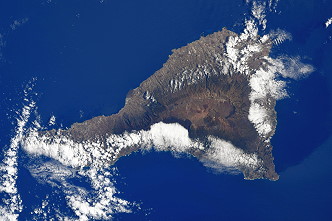 |
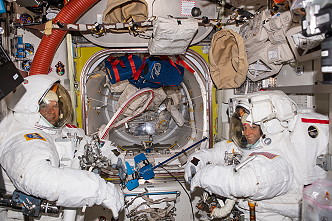 |
 |
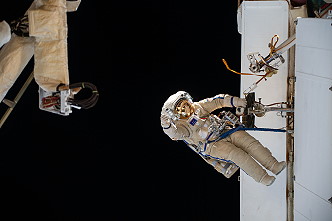 |
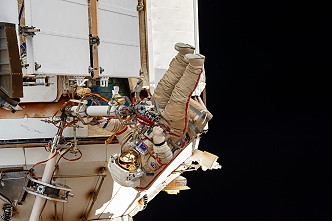 |
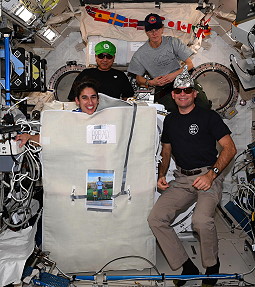 |
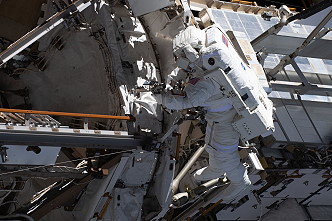 |
 |
 |
 |
 |
 |
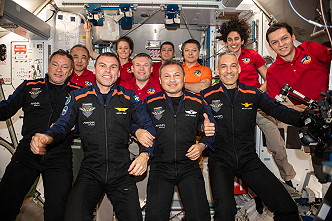 |
 |
 |
|
more onboard photos |
|
more Earth observation photos |
|
more EVA photos |
|
| © |  |
Last update on December 10, 2025.  |
 |